DRLO Aviation (part 2)
The answer to this threat was the creation in the United States of so-called "Barrier Forces" (more details here: North America Air Defense System (part of 1)). For this purpose, a network of radar stations was built in Greenland, Alaska, and Northeastern Canada, but the eastern direction from the Atlantic Ocean remained uncovered. Responsibility for the control of the airspace over the Atlantic took over the US Navy, starting a massive deployment of ships of the radar patrol and stationary radar platforms. The most important element of the “Barrier Forces” also became the AWACS aircraft.
Back in 1949, Lockheed specialists attempted to create a PO-749W radar patrol based on the Lockheed L-1 Constellation airliner. In order to exclude “dead zones”, the radar antennas were located at the top and bottom of the fuselage.
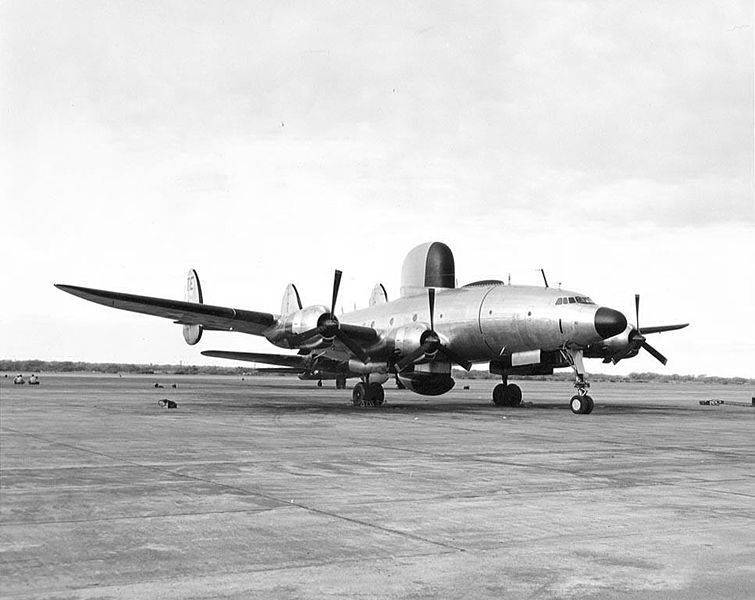
However, tests have shown that “the first pancake was a lump” - the composition and layout of the radar and communication equipment were not optimal, but the reliability was low. Many complaints were caused by the placement of radar operators' workplaces and the protection of personnel from high-frequency radiation. Several built PO-1W, in fact, became flying laboratories, which worked out various options for avionics and tactics for the use of heavy airborne early warning aircraft. After completing the test cycle, the aircraft was renamed WV-1 and transferred to the US Federal Aviation Administration (FAA), where they flew until 1959.
A truly massive was the DRLO aircraft, originally known as the PO-2W. This car was created on the basis of the long-haul transport-passenger four-engine Lockheed L-1049 Super Constellation (eng. "Super Constellation"). To increase speed, payload and fuel efficiency, this model extended the fuselage and installed Wright R-3350-75 Duplex-Cyclone turbocharged engines with HP 2500 power. each. These engines are a double 18-cylinder star with air cooling and turbocharging, are one of the most powerful serial piston engines. Originally, these aircraft engines were intended for B-29 bombers.
An aircraft with a normal take-off mass of 66 000 kg developed a maximum speed of 467 km / h, the patrol speed was 360 km / h. With full refueling, the PO-2W of early modifications could cover a distance of more than 6400 km, subsequently, due to the increased fuel tanks, the flight range increased by about 15%. From the outset, the military pointed to a relatively small ceiling - 5500 meters, which limited the range of the onboard radar. But I had to live with it, at the beginning of the 50-s in the USA with their advanced aviation industry there was no suitable platform with economical turbojet or turboprop engines and pressurized cabin. Military aircraft rejected the version of the DRLO aircraft based on the Boeing B-50 Superfortress, as the bomber had a smaller internal volume compared to the Super Constellation and could not provide the necessary equipment and comfortable conditions for the radar operators.
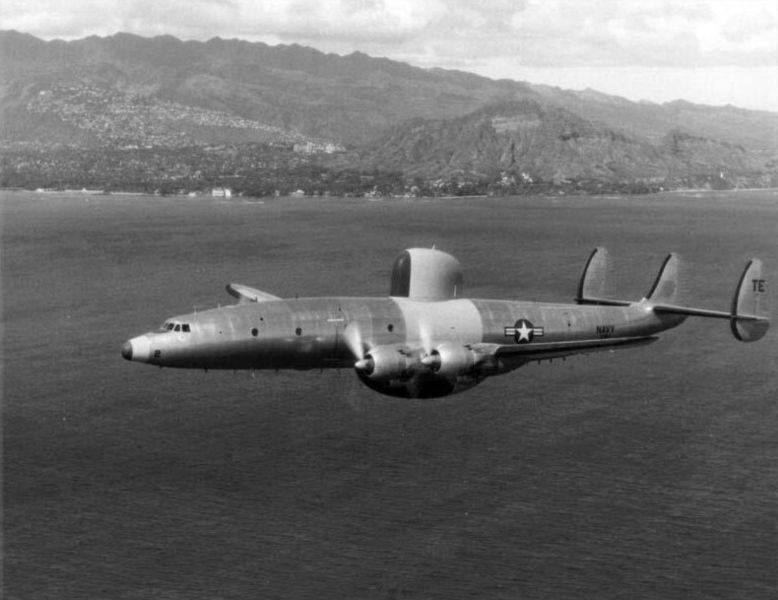
Compared with the original version of the PO-1W, the extended PO-2W has already become a fully-fledged airspace control aircraft. When designing and placing the equipment, they took into account the shortcomings of the previous model. On the PO-2W placed advanced radar AN / APS-20 and radar AN / APS-45.
The characteristics of these stations and now cause respect. According to American sources, the AN / APS-20E radar with a peak power of up to 2 MW operating at a frequency of 2880 MHz could detect large sea targets at a distance of up to 300 km. The B-29 bomber, flying at an altitude of 7000 meters, could be detected at a distance of 160 km, and the F-86 fighter - 120 km. The AN / APS-45 station, which operated at the 9375 frequency of MHz, which controlled the lower hemisphere, could see targets of type B-29 at a distance of up to 200 km.
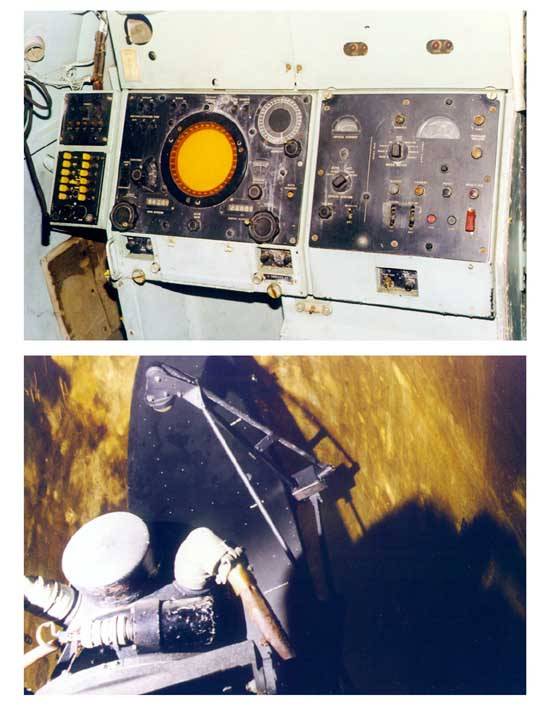
PO-2W became the first American “airborne radar picket”, which simultaneously used two radar stations that controlled the lower and upper hemispheres, which excluded shading zones. This became possible due to the large internal volumes of the aircraft, which made it possible to accommodate not only radar, navigation and communications equipment, but also with sufficient comfort to equip workplaces and rest areas for numerous crews. On various versions of the aircraft on board could be from 18 to 26 people. Taking into account that the average duration of patrols was 12 hours, there was a supply of food, a refrigerator and a kitchen on board. According to the experience of testing PO-1W, special attention was paid to protecting the crew from microwave radiation.
In 1954, after the start of regular patrols, the US Navy aircraft was renamed WV-2. Initially, the American admirals hoped that airplanes with powerful radar would be able to cover aircraft carrier groups with a “radar umbrella”. During long flights, the DRLO aircraft were supposed to be refueled in the air from tanker aircraft taking off from aircraft carriers. However, in practice this was never implemented and the air situation in the region following the order WV-2 could only be controlled at a distance of several hundred kilometers from its shores. For this reason, the main activity of the aircraft WV-2 steel operations in the "Barrier forces." The first coastal-based ARLO aircraft were deployed in the United States at the Patuxent River airbase and in Canada in the Newfoundland area and Barbers Point. During 1955, the naval specialists tested the WV-2, at the same time the process of getting rid of “children's ills” and linking with ground control points followed the order for another 130 aircraft.
Almost simultaneously with the receipt of a new order, Lockheed offered a radically modernized version of the same machine with more powerful radars, new data transmission equipment and Allison T56 turboprop engines. It was also supposed to equip the aircraft with the AIM-7А Sparrow air combat missiles, which had just been put into service. However, this project did not find support from the military and on the newly built DRLO planes they introduced only new avionics.
The airborne radar APS-20, designed during World War II, was replaced by a modern AN / APS-95 multi-function radar operating in the 406-450 MHz frequency band. The AN / APS-95 station could detect air and surface targets at a distance of more than 300 km and simultaneously accompany up to 300 objects. The update rate was 12 seconds. The AN / APS-95 radar antenna was mounted inside a radome 8 meters in diameter, on a massive pylon above the fuselage.
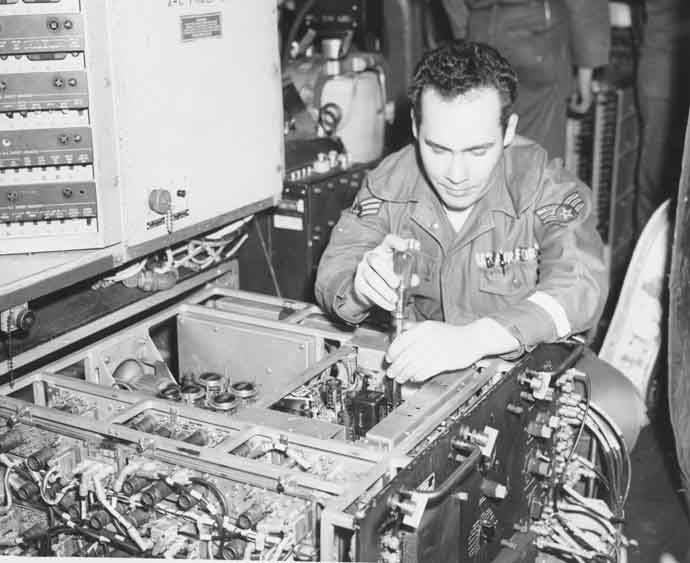
The equipment for the automated transmission of radar data transmitted information about the range, azimuth and the intended type of target to a ground control point or aircraft carrier. Transmission was carried out using a narrow-beam antenna over the radio channel, which made it difficult to suppress interference or interception.
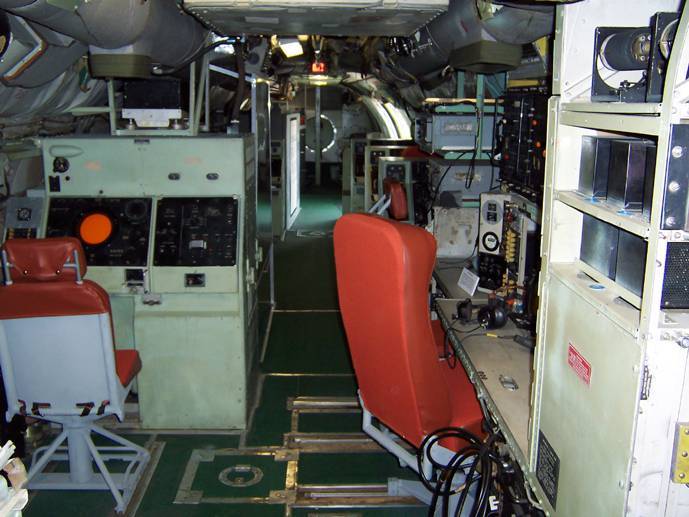
For its time, the WV-2 installed highly advanced avionics, which provided high possibilities for detecting airborne targets and processing information. By the standards of 50-60-s, these planes were considered to be real "electronic monsters", but their value was not small. The first WV-2 cost the American treasury more than $ 2,2 million, and as the onboard filling improves and new modifications appear, the cost has only increased. But even with the exorbitant price from 1953 to 1958, the 232 aircraft was built year.
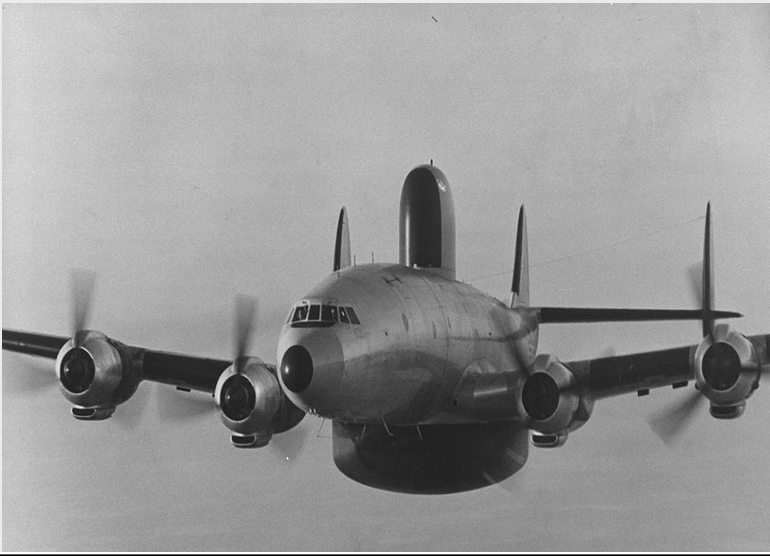
At the end of the 50-x - the beginning of the 60-x, the WV-2 patrol zone in the Atlantic included a vast territory to the Azores, Greenland, Iceland and the British Isles. At the same time DRLO airplanes made an intermediate landing in Iceland. On the Pacific coast, taking off from the airfield of Barbers Point, "air patrols" reached the Hawaiian islands and landed at the airfield of Midway. In those years, the airspace adjacent to the United States patrolled daily at least five radar patrol airplanes that closely cooperated with US Navy ships. In total, taking into account the possible duplication at air bases around the clock, at least nine vehicles with crews were in combat readiness.
In 1962, the aircraft was renamed the EU-121 Warning Star. Much later than the fleet, the Air Force became interested in DRLO planes. However, the lack of haste allowed the Air Force to adopt the EC-121С, which was already “brought to mind,” with more advanced radars and communications equipment. However, the EC-121C was soon replaced by the EC-121D model with increased fuel tanks.
The air defense of the North American continent from the second half of the 50-s relied on the interceptors' automated guidance system, and the integration of the “Warning Starov” into it became quite natural. EC-121D aircraft were mainly reworked. In total, the 121 machines were upgraded to the EC-121H and EC-42J versions. Modifications of the EU-121Н and EC-121J differed among themselves in the composition of the avionics and the placement of operators' workplaces. The most perfect, but not numerous, modification in the Air Force was the EU-121Q. On this aircraft, the AN / APS-45 radars were replaced with the AN / APS-103 radar, capable of consistently seeing targets against the background of the earth's surface. Twenty-two EU-121Н, in the course of reconditioning and upgrading, equipped with a new-their-own equipment and improved radar information display facilities. This variant is known as EC-121T. In 1973, a part of the least worn EU-121T operated in the Pacific received EW AN / ALQ-124 stations.
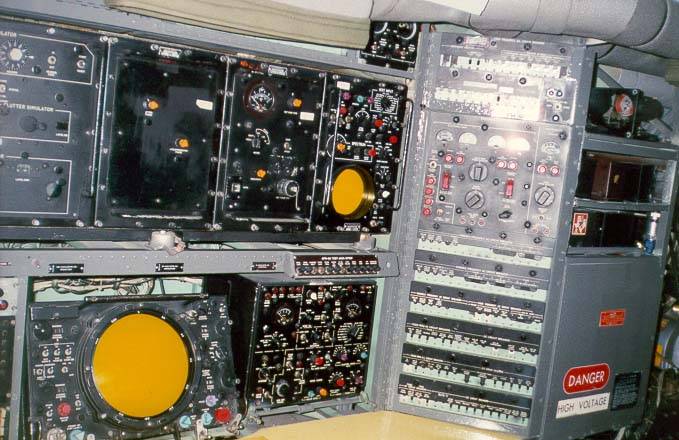
As is often the case with technically sophisticated weapons, when DRLO airplanes reached the peak of their combat readiness, their careers began to decline. The machines of the early versions were converted into weather intelligence WC-121N and EC-121S electronic warfare aircraft and EC-121M reconnaissance aircraft.
In the middle of 60-x, the intensity of patrol flights of DRLO aircraft as part of the operations of the “Barrier Forces” began to decline, since the main threat to the United States was presented not by relatively small Soviet bombers, but by intercontinental ballistic missiles. By that time, twin-engine radar patrol aircraft appeared on the decks of American aircraft carriers, capable of conducting long-term patrols, and the fleet also began to lose interest in the expensive Varning Staram, and these machines began to switch to other tasks.
One of the main functions of the EU-121 was weather reconnaissance, powerful radars made it possible to detect approaching hurricanes and thunderstorms at a considerable distance. However, heavy piston aircraft did not always manage to retire in a timely manner. So, 1 August 1964, the hurricane "Clio" heavily patted the board №137891. The end fuel tanks were torn off by the hurricane wind and deformed the fuselage, and close thunderstorms disrupted most of the on-board electronics. The crew managed to safely land a badly damaged car, which was later written off as non-recoverable.
Various modifications of the EU-121 participated in numerous new developments and research programs. Specially trained vehicles tracked ballistic missile test launches around the world, accompanied by cruise missiles and target aircraft. At the beginning of the 60-x tests passed the plane WV-2E (EC-121L) with radar AN / APS-82, which had a rotating antenna in a disk-shaped fairing. This arrangement of the radar antenna on the DRLO aircraft subsequently became classical.
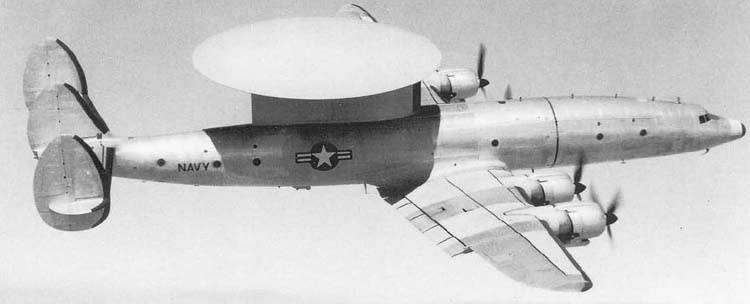
The AN / APS-82 circular survey station demonstrated the ability to detect targets against the background of the earth, but during the tests a low reliability and the need for refinement were revealed. In addition, the aircraft with relatively low-power piston engines had a small practical ceiling, which made it impossible to realize all the advantages of a station with a rotating disk-shaped antenna (the higher the radar is located, the greater the range it can cover).
After the final shutdown of the Barrier Forces regular patrols, a significant part of the EU-121 was transferred to airfields outside the continental USA: Atsugi in Japan, Milden Hall in the UK, Rota in Spain, Roosevelt Roads in Puerto Rico and Agana in Guam. Where the aircraft were used for tracking the airspace of Eastern Europe, the USSR, the PRC, the DPRK and Cuba.
The US intervention in the fighting in Southeast Asia has led to increased interest in DRLO aircraft. Already in 1965, several EC-121Ds were sent to the combat zone. Initially, the aircraft made flights from Taiwan, and later flew to Ubon airbase in Thailand. The main task of the crews of the “airborne radar pickets” was the control of air traffic over South Vietnam, as well as assistance in navigating airplanes participating in the air strikes on the DRV. However, in the 1967 year, the "Warning Stary" began coordinating the actions of American fighters while conducting air battles with North Vietnamese MiGs.
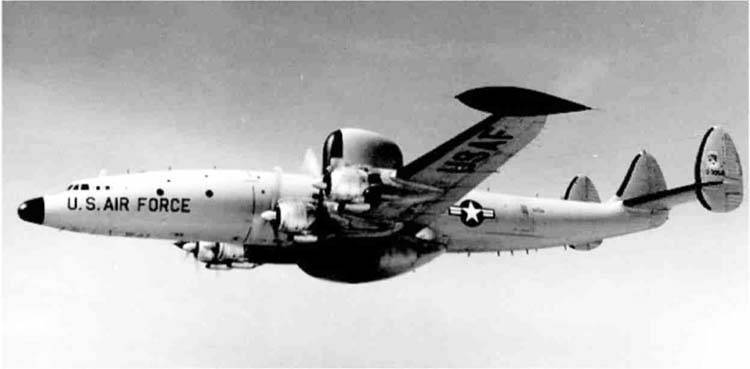
However, the humid tropical climate had a devastating effect on the aircraft’s electronic equipment, and in 1970, EC-121D were replaced with EC-121T with more advanced avionics, they were placed at Korat airbase in Thailand. The benefits of the EC-121T were much greater, the DRLO planes not only coordinated the actions of fighters in air battles, but also warned about the launches of the CA-75 anti-aircraft missiles and put obstacles in the North Vietnamese ground radar. With the information support of the EU-121, more than a dozen MiGs were shot down over Vietnam and Laos, around 135 000 of aircraft flights of bomber and attack aircraft were carried out, more than 80 special and search and rescue operations were conducted.
During operation, most of the machines of later modifications underwent a refurbishment and modernization. This mainly concerned the "e-filling". Automated computer-controlled systems and modern means of display and transmission of data were introduced into the avionics. The transition from vacuum devices to solid-state electronics reduced the weight of the equipment and its power consumption. The service of DRLO, EW and electronic reconnaissance aircraft of the EU-121 family continued in the USA for almost 30 years. The last Warning Star in the USAF was decommissioned in 1982.
Over the years of operation in various flight accidents, the Air Force and the US Navy have lost 25 airplanes and 163 crew members. There is a high probability that part of the EU-121 was lost as a result of "external influence" during the execution of provocative flights along the borders of the countries of the "communist bloc". It is reliably known about one EU-121M, shot down by North Korean 5 fighters on April 1969, on the day of the celebration of 57's birthday of Kim Il Sung.
In 50, Americans, fearing nuclear bombing, spent billions of dollars on building alert and interception systems. Creating a radar network in Alaska, in northern Canada and in Greenland, the construction and operation of offshore radar platforms, ships and aircraft of the radar patrol required huge financial injections. One of the attempts to reduce the cost of lighting the air situation was the creation of sentinel airships, designated in the US as N - class.
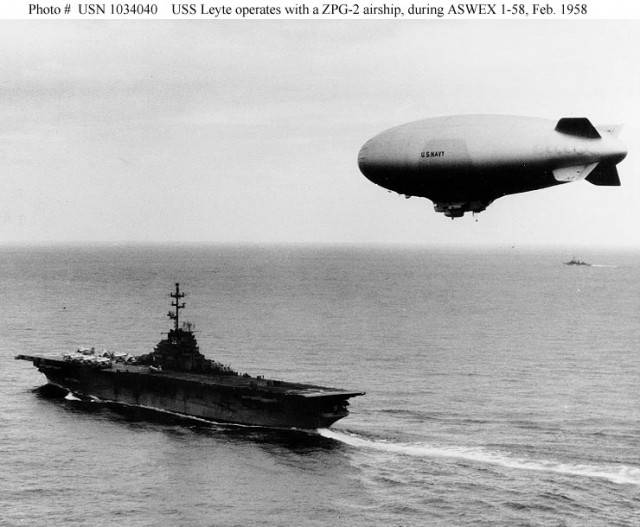
At the end of the 40-ies, Goodyear Aircraft proposed to the US military a draft of the airborne surveillance radar. According to the presented calculations, the controlled vehicle is lighter than air, could be on patrol for more than 100 hours, which is several times higher than the capabilities of DRLO aircraft. The tests of the ZPG-1 were generally successful. It was a “soft” type airship with an internal helium volume 24777 m³. But the military wanted to have a more lifting platform. Soon after the first model appeared ZPG-2W with a volume of 28317 m ³, equipped with a radar AN / APS-20. The radar antenna was located in the lower part of the airship's nacelle.
The gondola that housed the crew member 21 and the radar connected the tunnel, it was possible to get to the radar station and fix the problems that occurred. Two engines were installed in the gondola, working on one propeller, which allowed, if necessary, to fly successfully on one engine.
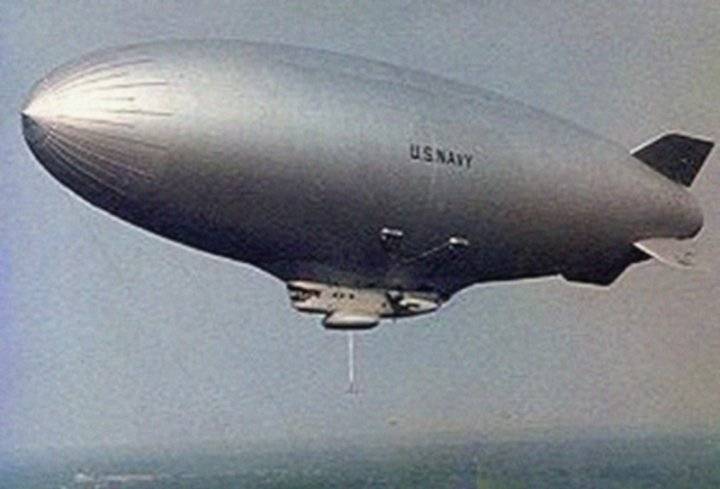
A total of 12 serial DRLO airships were built. The first ZPG-2W joined the 1-wing of the airship at Lakehurst in March 1953. Already in May, the 1954 of the year on the ZPG-2 W "Snowbird" set an international record of flight duration. The unit stayed in the air for 200 hours and 24 minutes.
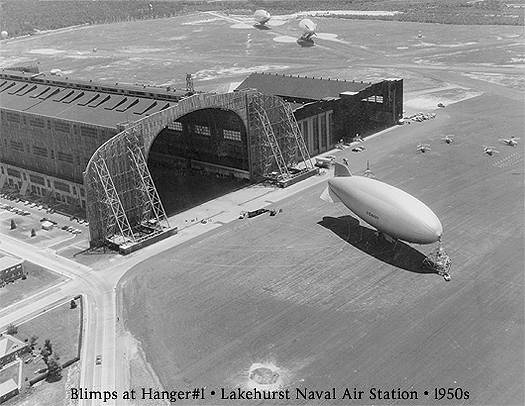
Operation of airships in Lakehurst began long before the appearance of "airborne radar pickets", even the war years in the United States created airships designed to hunt submarines. Based on the operating experience of the ZPG-2W, the largest American airship DRLO ZPG-3W was created. It was also a “soft” type apparatus with a shell of 42 500 m³. Its length exceeded 121 meter, and the width of the shell 36 meters. The AN / APS-70 radar large parabolic antenna with a diameter of 12,2 meter was located inside the envelope. The maximum speed of the ZPG-3W was 128 km / h.
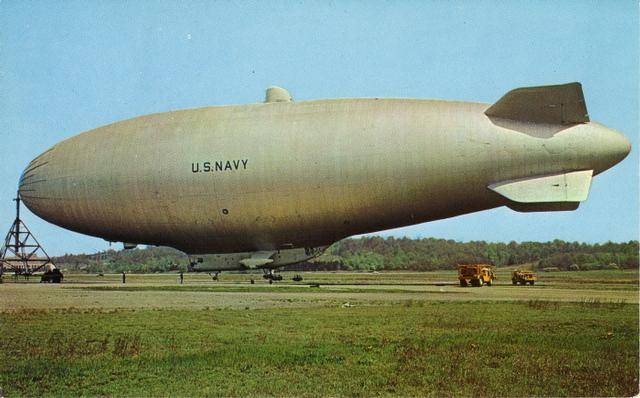
The first ZPG-3W entered service in July 1959, the entire fleet received four such airships. Due to the large carrying capacity and rather comfortable living conditions, the ZPG-3W airship could be on duty for several days. However, these devices were very meteo-dependent and did not have a large margin of safety. In case of a sudden deterioration of the weather, which is not uncommon in the sea, the speed and altitude of the airship, which also had a large sail, might not be enough to leave the bad weather zone, although thunder fronts on the radar indicator were fixed at a much greater distance than airborne targets . Several times the airships were damaged due to strong winds, but for the time being everything managed.
On July 6, 1960, the ZPG-3W airship, assigned to Lakehurst Air Base, landed in mid-air over the ocean in Long Beach Island. In this case, the entire crew, consisting of 18 sailors, was killed. By that time in navy there were already a sufficient number of coastal and deck-based AWACS aircraft. The economic benefits of operating slow and weather-dependent airships were not obvious, and the incident was used by the Navy command as an excuse to close the program. The last flight of the ZPG-3W took place on August 31, 1962, and subsequently the patrol airships were deposited in Davis Montan. They were in the "bone cemetery" until 1993, after which they were "disposed of." This fate was avoided by one ZPG-3W, which is waiting for its turn for restoration at the National Museum of Naval Aviation at the Navy Air Base Pensacola, Florida.
To be continued ...
Based on:
http://www.globalsecurity.org/wmd/systems/zpg-3.htm
http://www.airwar.ru/enc/spy/ec121.html
http://www.dean-boys.com/ec-121.htm
https://www.ibiblio.org/hyperwar/USN/ref/RADTWOA/RADTWOA-2.html
https://www.ll.mit.edu/about/History/earlywarningradars2.html
http://jproc.ca/rrp/rrp3/argus_equipment_details.html
http://www.nicap.org/reports/lockufoinc.htm
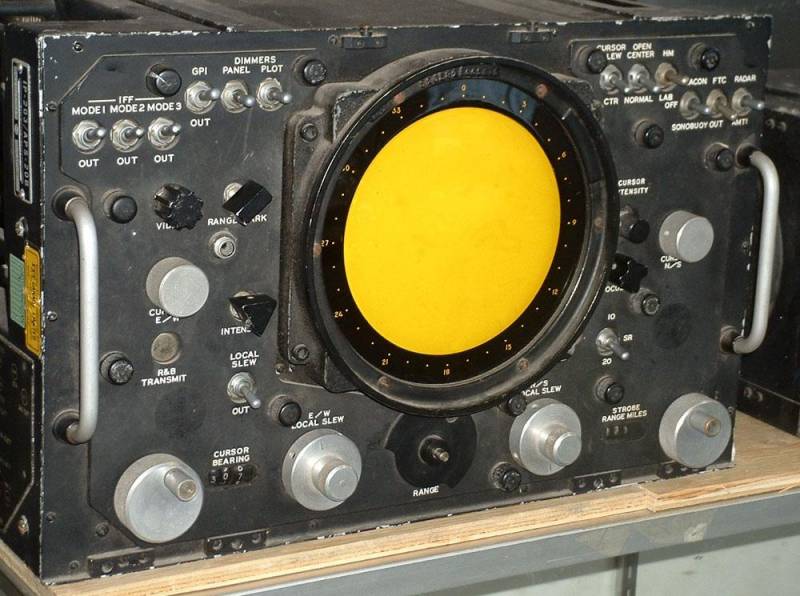
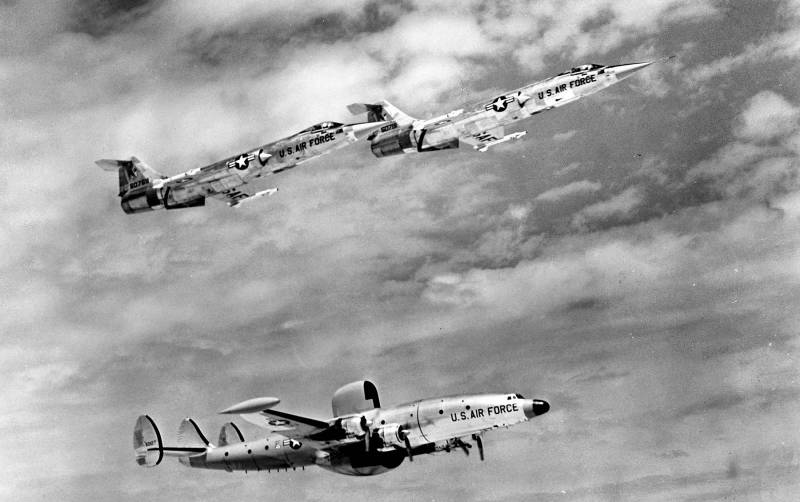
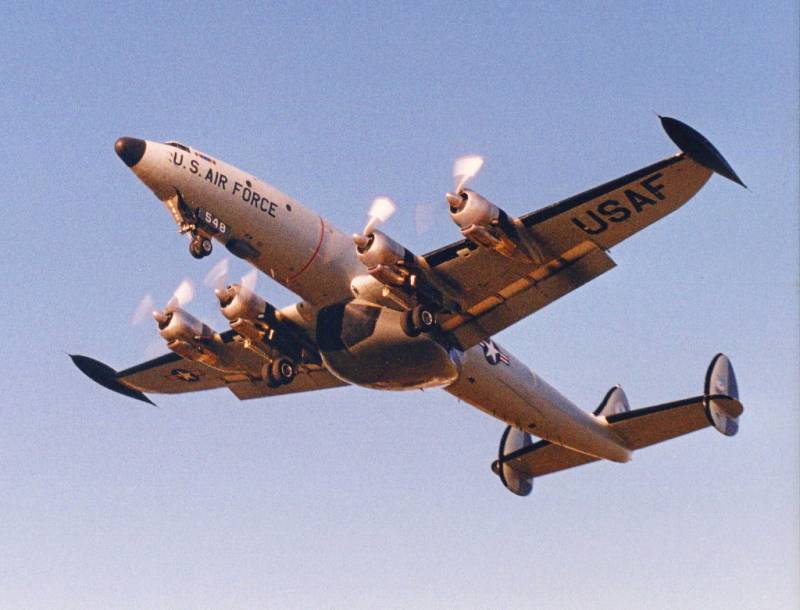

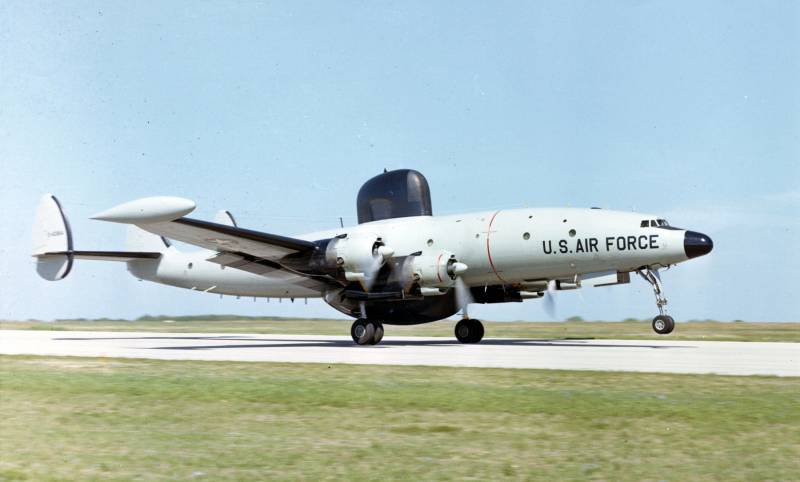
Information